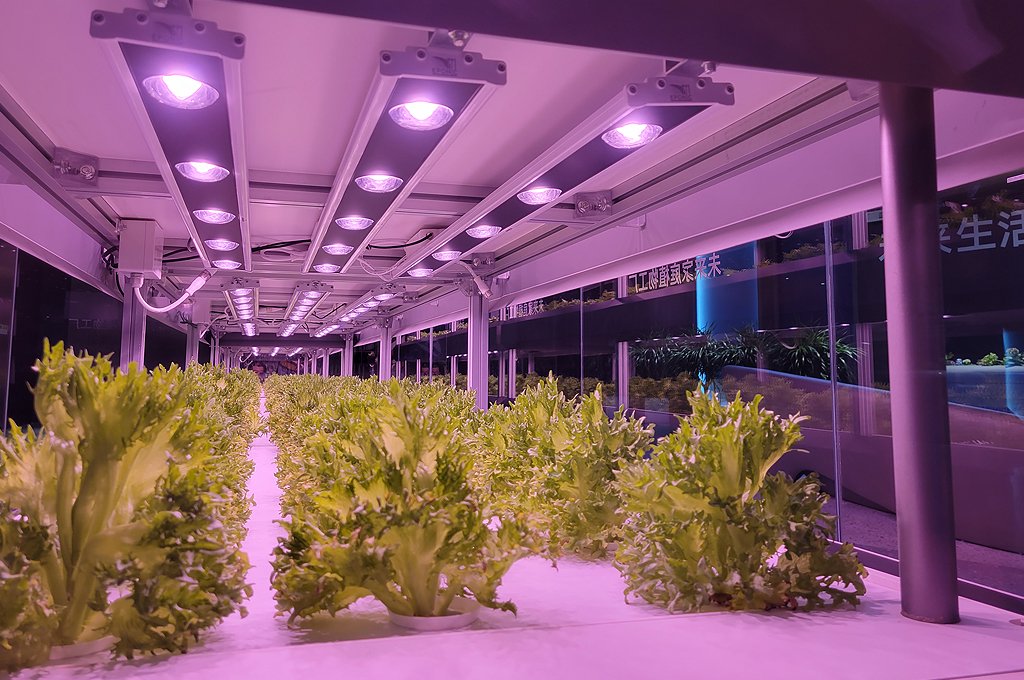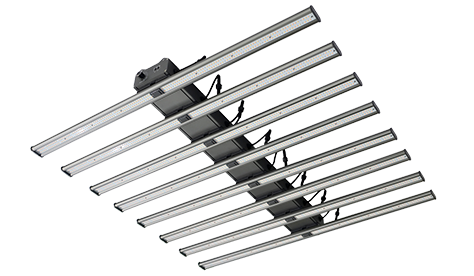Throughout this lengthy process, humans have gained a deeper understanding and knowledge of the natural world, especially in planting. New and improved growing methods, like hydroponics, have been developed alongside traditional ones.
Hydroponics has become a popular mode of vegetable cultivation in recent years. Most people have shown interest in growing hydroponic vegetables, but they have expressed some concerns.
Is it possible to grow healthy, edible vegetables using only nutrient solutions instead of soil?
Is the plant growth stimulated by adding hormones or growth factors to the nutrient solution?
Another skeptic: I don’t like these plastic vegetables. Soil-grown vegetables are healthier than those cultivated with modern technology and chemicals.
In general, hydroponic food is considered to be healthier and safer than food grown in soil. When it comes to nutrition, vegetables are grown hydroponically or in soil typically have an equal amount of minerals and vitamins.
However, many variables can determine how healthy a vegetable is. The nutrient solution, type of plant, growing method, environmental conditions, etc. can all affect the healthiness of a hydroponic harvest.
We’ll examine some of these factors, and once you gain a better understanding of hydroponic vegetable nutrient solutions, this concern will naturally go away.
Whether you’re a gardener planning growing vegetables indoors hydroponically or a professional grower considering investing in vertical farming, we believe this article will provide valuable information.
What is A Hydroponic Growing System?
Growing plants in nutrient solutions without soil is called hydroponic.
This is a man-made hydroponics world created through specific facilities that are relatively airtight and capable of storing nutrient solutions.
In an artificial environment, the conditions for plant root growth such as water, fertilizer, and air remain consistently stable. Additionally, the root system may be partially or fully submerged in a nutrient solution.
To clarify, hydroponic vegetables do not involve GMOs and hydroponic vegetable production does not require genetically modified seeds or crops. You are free to use traditional plant varieties without any restrictions.
A Controlled Hydroponics World
The conditions for growth in a hydroponic plant system are meticulously regulated, including nutrition, light, water, pH, and temperature.
By optimizing all aspects, plants can grow quickly and produce healthy and nutrient-rich vegetables. Additionally, this process eliminates any contaminants and pathogens that may be present in the soil.
The hydroponic growing system, which uses a nutrient solution, can be fully enclosed to minimize exposure to outside contaminants. Commercial hydroponic greenhouses create a controlled environment by fully enclosing plants and roots.
Maintaining the balanced growth of a plant requires crucial attention to its roots. To ensure a healthy root environment, it’s important to maintain proper levels of oxygen, temperature, pH, and ion concentration, as well as the right ratio between different ions.
Hydroponic technology assesses plant health and root environment scientifically. Its goal is to accurately and effectively identify the distress signals that plants emit when they are experiencing poor health.
To ensure optimum plant growth, it’s important to check for any mineral deficiencies, the balance of anions and cations, presence of toxins in the soil, and any harmful microorganisms in the root area.
Hydroponics commercial setup allows growers have the ability to effectively analyze data and proactively address any potential problem areas. The integration of human intervention serves to further reduce the likelihood of errors occurring.
Er hydroponiske grønnsaker trygge å spise?
Hydroponics, as modern high-tech agriculture, originates from agricultural countries such as the United States, the Netherlands, Israel, and Japan. They are the top leaders in soilless cultivation.
Soilless cultivation is an advanced agricultural technology that has been put into practice for over a century. Hydroponics is currently utilized in over 100 countries worldwide, and its safety has been extensively tested and confirmed.
Growing vegetables indoors through hydroponics offers various advantages, such as high yield, quick results, low fiber content, excellent taste, good quality, minimal pest problems, and more.
Despite the benefits of hydroponic vegetables, there are concerns surrounding the composition of their nutrient solution, the level of nitrites present, and whether their heavy metal content meets safety standards.
There are also some doubtful voices: the outdoor planting suffer from sun exposure, are hydroponic crops grown in plastic poisonous?
And now, we should further examine these crucial elements.
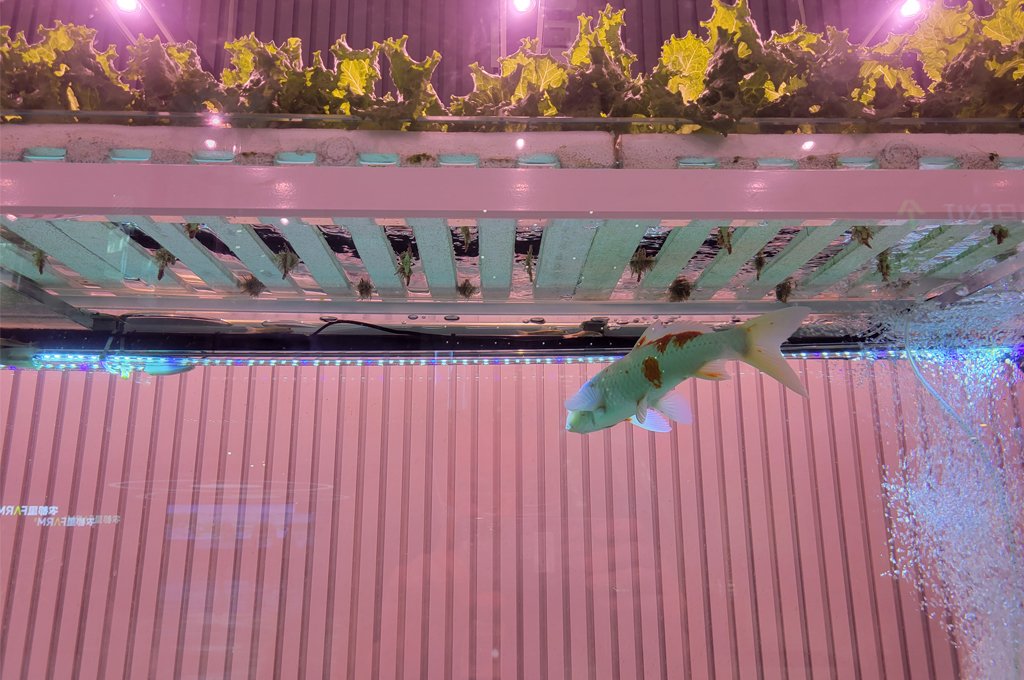
Nutrient Solution Shows Safety in Use
Have you heard of aquaponics? The Japanese Garden Trial Universal Formula is an excellent solution for maintaining normal nutrient concentrations in a nutrient pool, which allows fish to survive.
It is worth noting that the nutrient solution is non-toxic, unlike certain farmyard or organic fertilizers that can be harmful.
This indicates that the nutrient solution is actually non-toxic. On the contrary, farmyard and organic fertilizers may not be.
The Garden Trial Universal Formula was developed by the Kotsu Horticultural Experiment Station in Japan during the 1960s. This nutrient formula is suitable for soilless cultivation. This formula is widely utilized in hydroponic nutrient solutions for diverse plant species.
We have a clear understanding of all the ingredients in the nutrient solution, but the composition of the soil remains a mystery. It is noteworthy that soil-based cultivation entails a higher safety hazard as opposed to hydroponics.
The Composition of the Nutrient Solution
There is a common misconception that hydroponic vegetables are grown using some sort of “potion”.
However, it’s important to understand that the nutrient solution used in hydroponics is what fuels plant growth. Let’s take a closer look at this solution.
Let’s clarify that while the nutrient solution may be classified as a fertilizer, and there is no need to be concerned about its impact on human health.
Agricultural experts discourage the overuse of chemical fertilizers due to concerns regarding soil structure and environmental pollution, rather than any direct harm to human health. Chemical fertilizers just affect the taste of some crops and nutrient imbalance.
The nutrient solution for hydroponic vegetables is precisely formulated utilizing some chemical fertilizers in accordance with the nutrient requirements of various vegetable crops under natural growth conditions.
There are 16 essential nutrients for the entire growth period of plants, including carbon (C), hydrogen (H), oxygen (O), nitrogen (N), phosphorus (P), potassium (K), calcium (Ca), magnesium (Mg), sulfur (S), iron (Fe), manganese (Mn), zinc (Zn), copper (Cu), molybdenum (Mo), boron (B), and chlorine (CL).
Among them, hydrocarbon and oxygen can be obtained directly from water and air, while the remaining 13 minerals need to be obtained from soil or artificial fertilization.
Let’s use the most generally used Japanese garden test universal formula as an example to get a better understanding of what a nutrient solution is.
The ingredients used in the Japanese garden trial general formula are as follows.
Calcium nitrate – a commonly used fast-acting calcium and nitrogen compound fertilizer with rapid calcium and nitrogen supplementation. Its one-of-a-kind mix of nitrate nitrogen and water-soluble calcium provides various features and benefits not found in other fertilizers. It is one of the most valuable fertilizers on the market.
Potassium nitrate – 70% of the world’s potassium nitrate is used in agricultural fertilizers, with Israel and the United States producing the largest amount, accounting for about three-quarters of the world’s total. In addition to being a fertilizer, China stipulates that it can also be used as a coloring agent for meat products at a maximum use level of 0.5g/kg.
Ammonium dihydrogen phosphate – is mostly utilized as a fertilizer and fire retardant for wood, paper, and textiles, but also in pharmaceuticals and herbivore feed additives.
Magnesium sulfate – Magnesium sulfate can be used as tanning, explosives, paper, porcelain, fertilizer, and medically as an oral laxative. As magnesium is a key component of chlorophyll, magnesium sulfate is utilized as a fertilizer in agriculture.
It is typically used for potted plants or crops deficient in magnesium, such as tomatoes, potatoes, roses, and so on. The increased solubility of magnesium sulfate over other fertilizers is an advantage. Magnesium sulfate can also be found as a bath salt.
Iron chelate – Iron chelate is widely used in medicine, children’s nutritional additives and agricultural micro-fertilizers.
Boric acid – is utilized in a variety of sectors including glass, enamel, ceramics, medicine, metallurgy, leather, dyestuff, insecticide, fertilizer, textiles, and others. As a chromatographic analytical reagent, it is also used.
Manganese sulfate – an important trace element fertilizer in agriculture and a catalyst for chlorophyll synthesis in plants.
Zinc sulfate – it is used in medicine as an emetic. It can be used to prevent diseases in fruit tree nurseries and is also a common fertilizer to supplement zinc trace element fertilizer for crops, as base fertilizer, foliar fertilizer, etc.
The dosage of copper sulfate og ammonium molybdate is extremely minute (0.08 g and 0.02 g per ton of nutrient solution, respectively) and can be neglected in terms of safety.
The nutrients used have a slow-release effect and also help regulate the nutrient levels needed for the growth of hydroponic plants. This helps to prevent and improve any signs of nutrient deficiencies in the plants.
These substances contain potent biological enzymes and fulvic Acid that effectively break down organic acids released by hydroponic plant roots and decomposing matter in the water.
It is clear from the listed ingredients that the nutrient solution consists of well-known fertilizers that are widely used.
Additionally, some of these ingredients are commonly employed in food seasoning and pharmaceutical manufacturing, and have a proven track record of safe use as fertilizers.
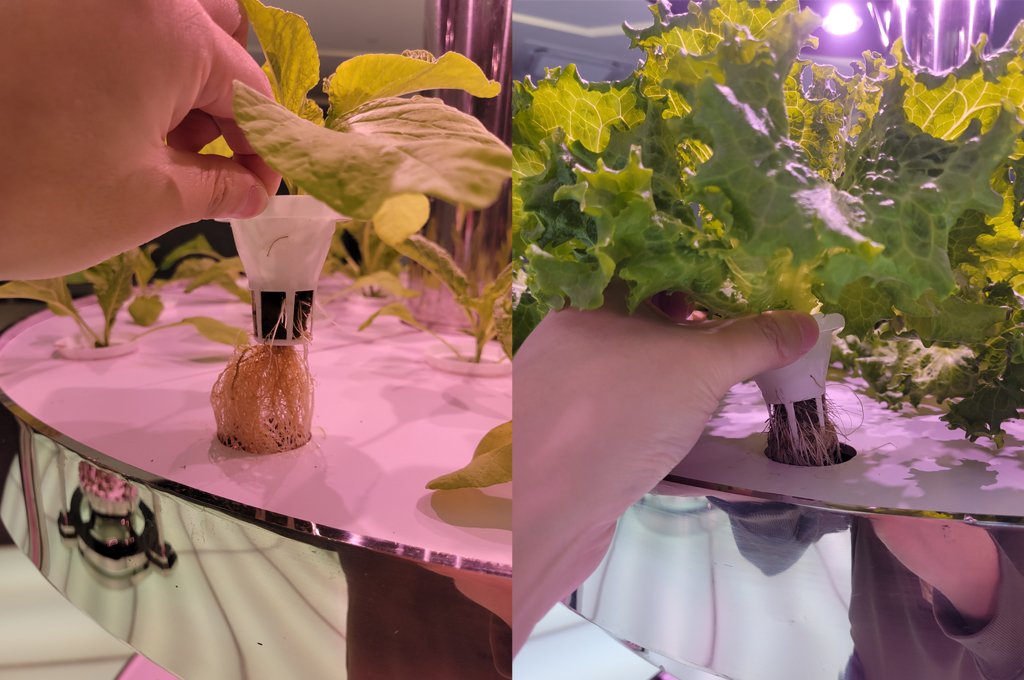
Nitrite Content of Hydroponic Vegetables
In addition to misconceptions about the ingredients of nutrient solutions, some friends are worried that nutrient solutions may cause hydroponic vegetables to have high levels of nitrates and nitrites.
It is imperative to understand that nitrates and nitrites found in vegetables are two distinct substances.
According to Professor Liu Shizhe from South China Agricultural University, it is important to differentiate between nitrate and nitrite in vegetables. Nitrite is the substance that can cause harm to the human body, not nitrate.
Nitrates and nitrites are compounds containing nitrogen that are commonly found in nature and in human environments.
In nature, nitrate can transform into nitrite through the action of nitrate reductase from nitrifying bacteria under reducing conditions.
In indoor hydroponic systems, the nutrient solution used for growing vegetables usually flows continuously. Although the dissolved oxygen level in the solution remains high, there are no circumstances that allow for the conversion of nitrate to nitrite.
In a water planting system, adding oxygenation equipment or changing the nutrient solution regularly, there is no need to worry about nitrate being reduced to nitrite in the nutrient solution.
By adjusting the nitrate supply according to the specific vegetable variety and growth stage, indoor hydroponic vegetables growth can be expertly managed. With a well-crafted plan, there is no need to worry about excessive nitrate content.
Just a heads up, all vegetables contain nitrite to some extent, regardless of their growing conditions.
While fresh vegetables initially have low levels of nitrite, the longer they are kept at room temperature, the more nitrite they will break down. Pickled vegetables tend to have a higher nitrite content.
For optimal health benefits, it’s recommended to prioritize fresh vegetables over ones that have been grown in specific ways. Consuming fresh vegetables can significantly decrease the amount of nitrite in your diet.
It’s worth noting that hydroponic vegetables don’t have high nitrite levels.

Heavy Metal Content of Hydroponic Vegetables
As a supplier of hydroponic equipment, we are aware of the concerns that both consumers and growers may have.
After addressing inquiries about the nutrient solution composition and nitrite levels found in hydroponic vegetables, it is now time to disclose if the heavy metal content in hydroponically grown vegetables meets the standard.
We strongly associate traditional soil cultivation with an increased risk of heavy metal contamination.
- In traditional agriculture, the use of chemical fertilizers has led to negative effects on the quality of the land, including salinization, acidification, and ground failure.
- Additionally, with the rise of industrialization and soil pollution, many fertile lands are now suffering from varying degrees of contamination.
- As a result, vegetables grown in contaminated soil are likely to contain high levels of heavy metals and other harmful pollutants.
We assure you that hydroponics can prevent soil contamination at its source.
- Commercial hydroponic growing systems provide plants with nutrient solutions that are tailored to their needs, ensuring that the water is clean and free of heavy metals.
- With hydroponic farming, harmful organisms that can disrupt traditional soil planting are avoided because the vegetables’ roots are in direct contact with the nutrient solution.
- Additionally, since hydroponic vegetables are usually grown indoors, they are protected from harsh weather conditions like drought or flood, which can negatively affect traditional farming.
Precision-Formulated Nutrient Solution
The nutrient solutions are made from food-grade ingredients and they provide essential nutrients for plant growth.
The pH of the solution is adjusted to the optimal range (usually between 5 and 6.5) to ensure maximum nutrient utilization by the plants. This balance also ensures that nutrients are not contaminated. Improper pH levels can make some nutrients toxic to plants and humans.
The nutrient solution is mixed according to a formula that provides the right concentration of nutrients for healthy plant growth. The amount of each ingredient is carefully controlled to avoid overfeeding the plants.
Water culture fractions are inert and sterile. Unlike soil, hydroponic cultures like clay pellets, perlite, and rock wool do not contain pathogens, pesticides, or heavy metals. This inertness reduces the risk of chemical contamination.
Is Plastic Safe for Hydroponics?
Commercial hydroponics systems are made of plastic that is food-grade and properly maintained, and hydroponic vegetables are safe.
However, some people believe that hydroponic systems grow plastic vegetables because they are concerned about potential leaching and UV degradation.
We understand the concern, especially when exposed to direct sunlight outdoors.
- Leaching of chemicals: When plastic is exposed to sunlight, it can release harmful chemicals into the nutrient solution. These chemicals can be absorbed by the plant and potentially make the plant unsafe to eat.
- Degradation of plastic: Fierce sunlight can also degrade plastics, making them more brittle and prone to cracking. This can lead to leaks in the system, which can contaminate nutrient solutions and plants.
- Increased growth of algae: Sunlight can also promote the growth of algae in the nutrient solution. Algae can compete with the plants for nutrients and can also release toxins that can harm the plants.
Understanding the Plastic Material of Hydroponic Systems
According to some sources, the safer hydroponic plastics are high-density polyethylene (HDPE) and low-density polyethylene (LDPE).
HDPE and LDPE are also food-grade plastics. They are resistant to heat, light, and water, and do not release any chemicals into aqueous solutions.
You can find these plastics in many household items, such as milk jugs, water bottles, yogurt containers, and plastic bags.
Another safe plastic for hydroponics is polypropylene (PP). PP is also food-grade and will not leach chemicals into aqueous solutions.
However, PP may not handle high heat as well as HDPE and LDPE, so it may not be suitable for exposure to sunlight.
One type of plastic you may encounter is polyvinyl chloride (PVC). PVC is widely used in plumbing and fittings. However, it may contain harmful additives that can leach into aqueous solutions over time. pvc may also degrade in ultraviolet light.
How to Reduce the Risk?
To avoid these dangers, it is important to keep hydroponic systems out of direct sunlight. However, if you must place your hydroponic systems in direct sunlight, you should take steps to protect the system from sunlight.
- Moving the system to a greenhouse: If possible, you should move the plastic hydroponic system to a greenhouse. This will help protect the system from direct sunlight, pests, and unstable weather.
- Using a shade cloth in your greenhouse: A shade cloth can help to block out the sun’s rays and protect the system from the sun’s harmful rays.
- Move the system indoors to grow: If possible, move your hydroponic system indoors. Combining it with LED plant lights to assist in the growth of the plants is also a good way to go.
If you’re still concerned about the safety of plastic hydroponic systems, there are things you can do to reduce the risk of contamination.
Choose high-quality plastics. Food-grade plastics are made from materials that are safe for use in contact with food. It is less likely to leach chemicals into hydroponic solutions.
The type of plastic used in the system can affect the severity of the dangers. Some plastics are more prone to leaching chemicals and degradation than others.
If you mind the material of the system, you can ask the hydroponic equipment supplier for some information to know more before you buy. Auxgrow is here, waiting for your inquiry.
Avoid exposing hydroponic systems to direct sunlight. Direct sunlight will accelerate the decomposition of the plastic and increase the risk of leaching. For insurance reasons, we would always recommend that you grow in a greenhouse or indoors, as it is safer when grown indoors with hydroponics.
Regularly change the nutrient solution. Changing the nutrient solution regularly will help flush out any chemicals that may have leached out of the plastic. It is a good idea to change the nutrient solution every two to three weeks.
However, if your plants are heavy feeders, or if you grow them in hot or humid conditions, you may need to change the nutrient solution more frequently.
Test the pH and EC levels of the nutrient solution. Regular testing of the pH and EC levels of the nutrient solution will help ensure that the levels of chemicals are safe for the plants. And adjust the pH and EC value of the nutrient solution as needed.
Are Hydroponic Vegetables Nutritious?
In addition to safety, people also need to measure the nutrition of hydroponic vegetables.
Mineral Nutrients in the Nutrient Solution
The hydroponic nutrient solution is a type of liquid fertilizer that contains various mineral elements necessary for the healthy growth of vegetables. These nutrients are similar to the ones found in soil but are in an ionic form.
Vegetables obtain nutrients from the soil through physical energy absorption.
Plants cannot directly absorb organic matter, so soil microorganisms must decompose the most organic or insoluble inorganic nutrients in the soil.
To absorb nutrients, the roots secrete organic acids to dissolve or regulate the conversion of other chemicals into ionic nutrients that the vegetables can absorb.
Imagine giving a plant a meal that it can’t fully digest yet, and it needs the help of microbes or the plant itself to absorb it. If the soil or growing environment isn’t high-quality, it can be more difficult for the plant to take in the nutrients.
The hydroponic nutrient solution has been shown to significantly increase the ability of plants to uptake essential nutrients.
Basically, a nutrient solution provides vegetables with a pure and efficient source of various nutrients, in the correct ratio based on the nutritional needs of the vegetable during its normal growth state.
In simpler terms, artificially prepared nutrient solutions are nutrients that have been fully dissolved into their ionic state.
Just like before being fed to the plants, the nutrients are finely ground and chewed. This enables the plant to directly absorb the nutrients, resulting in better absorption and growth of the vegetables.
Water and Fertilizer Utilization
Hydroponic planting is significantly more efficient in its water usage compared to traditional soil culture, with only 1/5 to 1/10 of the water consumption rate.
Hydroponics has the advantage of recyclable water and no water loss in soil culture. This makes it a suitable option for places facing drought and water scarcity.
Hydroponic cultivation has a high nutrient utilization efficiency, with approximately 90% to 95% (or more) of vegetables being readily absorbed and used.
Hydroponics aims to provide specific nutrients based on the unique varieties and growing habits of various vegetables.
The waste nutrient solution, once treated, can be recycled with complete assurance that it will not cause any harm to the environment.
The average utilization rate of fertilizer in conventional soil culture is about 30% to 50%.
- After phosphorus fertilizer is applied to the soil, a large part of it will form iron sulfate, aluminum, calcium and other phosphate precipitates, and cannot be absorbed and used by crops. The utilization rate of phosphate fertilizer is only about 20%~30%.
- Nitrogen fertilizers are easily nitrated and lost with irrigation water after being applied to the soil. It is also lost due to ammonia volatilization and denitrification to produce N2O and N2. Eventually, only about 50% of the nitrogen can be absorbed and used by plants.
- Potassium fertilizer is partially lost by irrigation water and surface runoff after application to the soil and is less utilized.
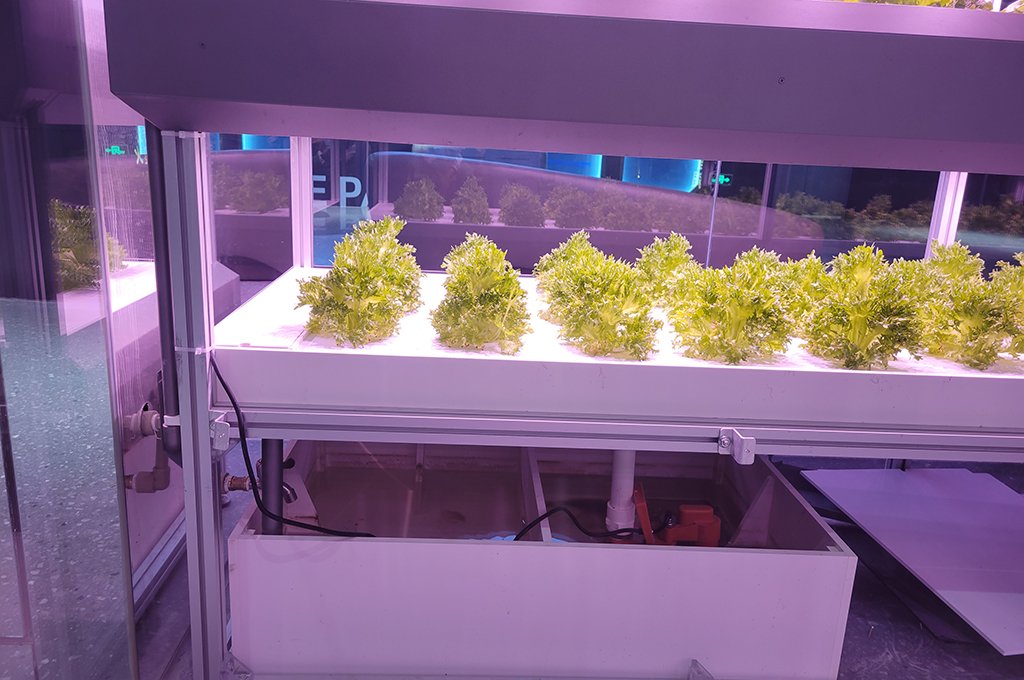
A Rigorous Testing System of Hydroponic Growing
Investors and consumers may have concerns about contamination by pathogens like E. coli or Salmonella before sufficient understanding is obtained.
In fact, professional hydroponic vegetable producers routinely test for pathogens such as E. coli, Salmonella and Listeria to ensure food safety. They also test for minerals and nutrients to ensure healthy hydroponic fruits and vegetables.
Controlled processes and testing protocols with strict sanitation rules and procedures, careful input selection, and regular testing for pathogens and chemical residues make hydroponic vegetables very safe.
Hydroponic vegetables grow in a visible and secure environment, and the whole process is more scientific and intuitive compared to traditional farming.
The greenhouse solutions hydroponics not only meets the family’s requirements for safe and fresh vegetables but also meets the high-quality requirements of different groups of vegetables such as the elderly, pregnant women and children.
More importantly, the hydroponic farming farmer also needs to obtain third-party certifications, such as food safety certification, sustainability certification, and non-GMO certification, to verify the safety of their products.
Research on the Safety of Hydroponic Vegetables
Recent studies have provided evidence that plants that do well in hydroponics than soil-grown vegetables in terms of nutrition, quality and safety. The controlled solution culture environments and the use of tested nutrient solutions may contribute to the development of hydroponic agriculture.
- A 2020 study analyzed the nutritional content of hydroponic and soil-grown kale. They found that hydroponic kale had significantly higher amounts of carotenoids, vitamin K, vitamin C and certain minerals. For example, hydroponic kale had 491 μg of vitamin K per 100g, compared to only 271 μg in soil kale. Vitamin C was also 64% higher in hydroponic kale (Di Gioia et al., 2020).
- A 2019 study compared the microbial quality and shelf life of hydroponically and soil-grown lettuce. They found that hydroponic lettuce had lower levels of pathogens like E. coli and a longer shelf life. For instance, E. coli was detected in 1 out of 72 hydroponic lettuce samples but in 8 out of 72 soil lettuce samples. The shelf life of hydroponic lettuce was also 3-5 days longer (Alegria et al., 2019).
- A 2018 study analyzed heavy metal concentrations in tomatoes grown in hydroponic and soil systems. They found that hydroponic tomatoes had lower levels of heavy metals such as Cd, Pb and Ni. For example, hydroponic tomatoes had only 3.2 μg of Pb per g, compared to 5.1 μg per g in soil tomatoes. Cadmium levels were also 45% lower in hydroponic tomatoes (Vlachou et al., 2018).
In conclusion, hydroponically grown vegetables have an excellent safety record and are considered a safe and responsible method of food production by researchers and regulatory agencies.
Is Hydroponics Worth It?
Are hydroponic vegetables harmful to health? After reading the whole article, you should have found the answer.
The universal nutrient solution for leafy vegetables, universal nutrient solution for fruit and vegetables, and universal nutrient solution for flowers have been planted in continuous production for many years in a 10,000 square-meter plant factory.
It has wide applicability and stable performance, and its application in commercial production has gained more than twenty percent yield improvement.
And you don’t have to wonder if the nutrient solution contains hormones and other chemicals. It simply contains the essential elements needed for the plant growth cycle!
With such a mature technicality and security, what is there to worry about?
Whether you want to start a small-scale vertical hydroponic system or a large scale hydroponic farming, we will be happy to communicate with you and serve you. AUXGROW will provide you with hydroponic farming equipment and offers you support.
Jayes
Som Digital Marketing Manager hos AUXGROW kombinerer Jayes en lidenskap for hydroponiske systemer og ekspertise innen LED-vekstlys. Med praktisk erfaring og en dyp forståelse, guider Jayes deg gjennom en verden av bærekraftig dyrking.



